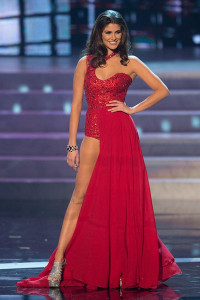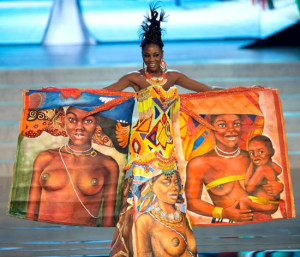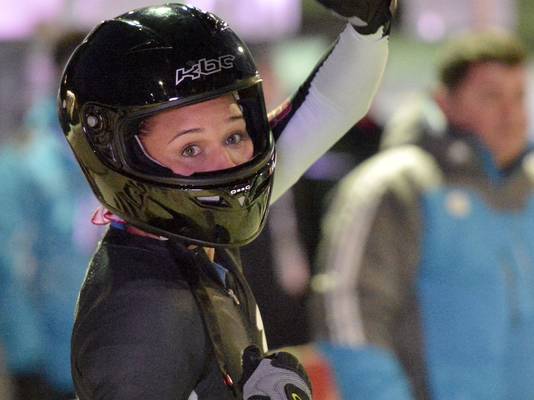Last week some pageant bling helped me get into the holiday spirit. Take a look at these amazing/atrocious gowns from the 2012 Miss Universe Pageant and tell me they don't make you think of a) A Christmas Tree and b) A Mrs. Claus outfit gone wrong.


(Well, actually only if Mrs. Claus was a part-time baton twirler and a part-time stripper-- seriously I don't know HOW they can call this a dress!)
I tweeted about both of these dresses during the December 19th Pageant; in fact I tweeted so much that I got put into Twitter jail, a place I did not even know existed (for this rules-following girl who never ever got a detention this was traumatic). I got locked out right after I saw Miss Mexico's monstrosity, so I'll blame her fashion choices.
Such questionable fashion choices almost made up for the fact that again this year my favorite part of the pageant didn't appear live. But what could really make up for seeing a jaw-dropping ensemble, like that worn by Miss Angola 2012, on your TV screen?

The next best thing is reading hilarious commentary about those national costumes, like that written by Tom & Lorenzo, which I encourage you to check out.
In addition to her questionable gown choice Miss Venezuela got a lot of disdain thrown her way after her unintelligible answer to her final question. But the most interesting question to me was for Miss Brazil and it came from Olympic Gold Medalist Kerry Walsh Jennings. Walsh Jennings asked Brazil what she thought about the fact that they both compete in bikinis and did she see this as sexual. Brazil totally deflected the question, but I found Walsh Jennings observation to be spot-on-- and something I mentioned here back in March after the decision was made to allow female beach volleyball players to wear something other than bikinis. To be sure female beach volleyball players are criticized for their uniforms (some even went so far as to speculate that the skimpy attire is why women's beach volleyball was featured so much in NBC's primetime Olympics coverage), but not the extent of pageant contestants, likely because sports are so much more valued in society today. I find it interesting though that Walsh Jennings is so enormously popular right now (just last week she found out of the sex of her third child live on The Today Show; and her former gold medal partner appeared on Dancing with the Stars). Perhaps these sorts of female athletic stars are just a new incarnation of the once enormously popular pageant queens of old?
Just like Walsh Jennings and many other female athletes at the Olympics, an American woman ended up at the #1 slot. Miss USA, which was a nice surprise. I knew Miss USA Olivia Culpo would do well-- as she is so beautiful-- but right after her USA win I speculated that she might be too short to win. I guess adding some inches with her high bun helped out though as she took the crown away from other strong contenders like Australia and Philippines. Olivia Culpo will definitely represent the crown well, even if she is disdainful of her Miss America pageant sisters.
My thoughts on Miss Universe are a bit belated as I've been down for the count with viral bronchitis (no fun to have over your son's first Christmas!). During my convalescence I caught up on some movies and my absolute favorite was Queen of Versailles. It's a thought-provoking take on the 1%, real estate market, income inequality, and the American dream. I was pretty surprised that beauty pageants were a part of this story, though I guess I shouldn't have been given the final two items in that list. Jackie Siegel, the Queen of Versailles, was Mrs. Florida in 1993 (when married to a different man) and in 2008 she took over as director of the Mrs. Florida Pageant. Her husband is a huge supporter of the Miss America Pageant and Miss America 2009 is shown, along with 2010 contestants, at the Siegel's Florida mansion. Siegel presents the Miss America Organization with a huge check in the documentary.
I'm not sure this is the type of attention the Miss America Pageant wants, but in the context of the Bravo-fication of American pop culture (note that Andy Cohen hosted Miss Universe and many of the channel's reality show stars were judges at Miss Universe, along with others with reality show ties, including co-host Giuliana Rancic who is married to the first ever winner of Donald Trump [who owns Miss Universe]'s competitive reality show The Apprentice) it's not shocking. Now, Andy Cohen, just get Jackie Siegel her own reality show, stat. And a crown (real diamonds, natch) to go with it.







